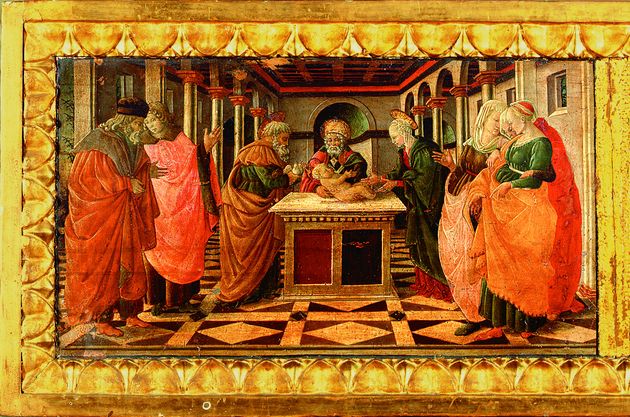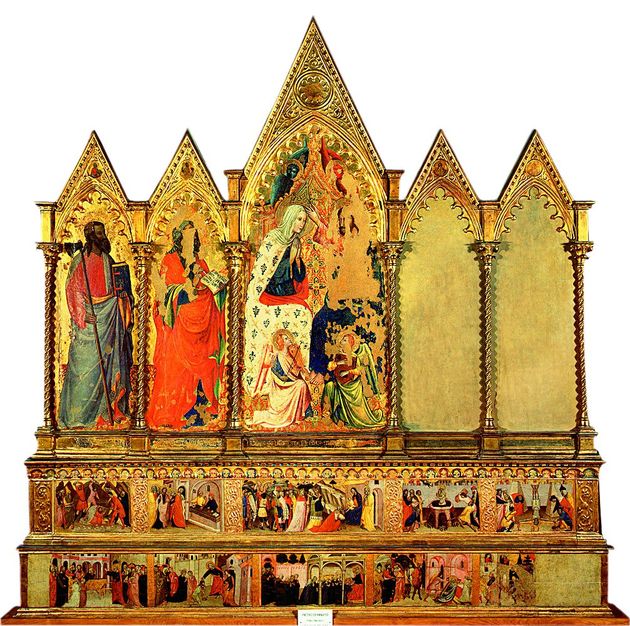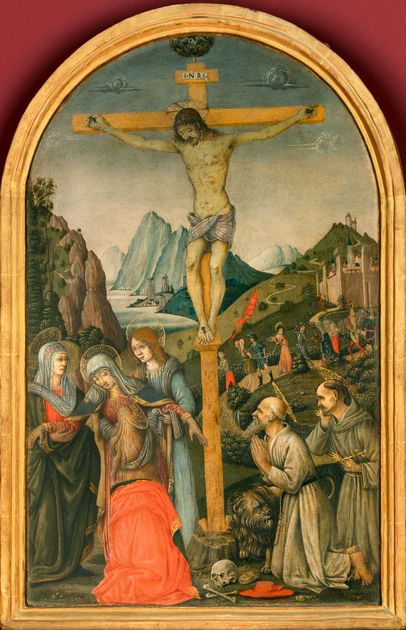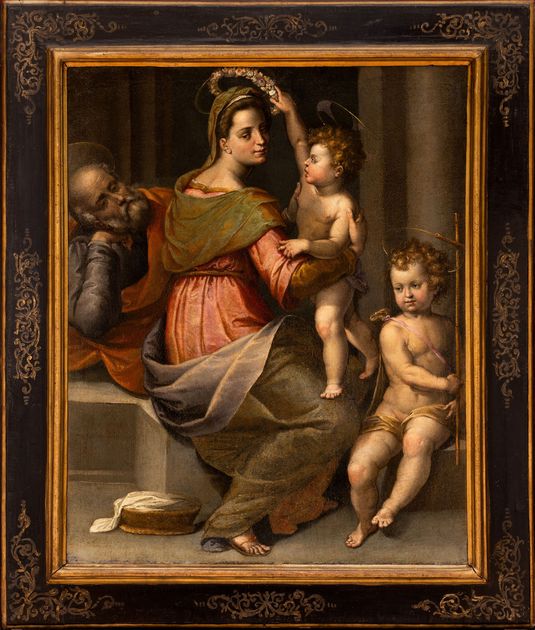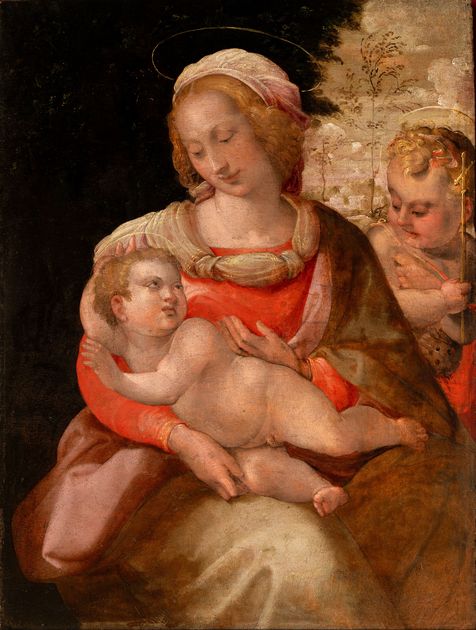The predella illustrates seven important episodes related to the story of the Holy Belt. Starting from the first one, we find the following paratactically-constructed scenes: the Apostles gathered around the empty sepulchre of the Virgin Mary and St. Thomas showing them the Belt he received; St. Thomas surrounded by the other Apostles handing the Belt to a priest; the Prato citizen Michele marrying the priest’s descendant Maria in Palestine, receiving from her mother a basket with the precious belt as a dowry; Michele and Maria’s sea voyage from the Holy Land to Prato; Michele, sleeping on the chest containing the dowry to prevent its being stolen, is lifted up by two angels and placed on the floor out of respect for the holy nature of the relic; Michele on his deathbed entrusts the Belt to the provost of the parish church of Santo Stefano.
Bernardo Daddi, who in Prato had already realized for the Hospital the precious Polyptych also exhibited in this room, in this predella painted the figures with flowing, elegant forms recalling the late Gothic style, creating strikingly calibrated narrative effects. The composition, substantially well-preserved despite the missing part at the right, shows a harmonious painting technique as in other later panel works by Daddi, with marked resemblances to contemporary Sienese paintings by Ambrogio Lorenzetti and his circle.
The sections are divided by finely-painted bands of lozenges and quatrefoils and have an unusual historiated step recalling the Polyptyches of Giovanni da Milano and Pietro di Miniato, which are on show in the first-floor room dedicated to the Late Gothic to Renaissance period.










